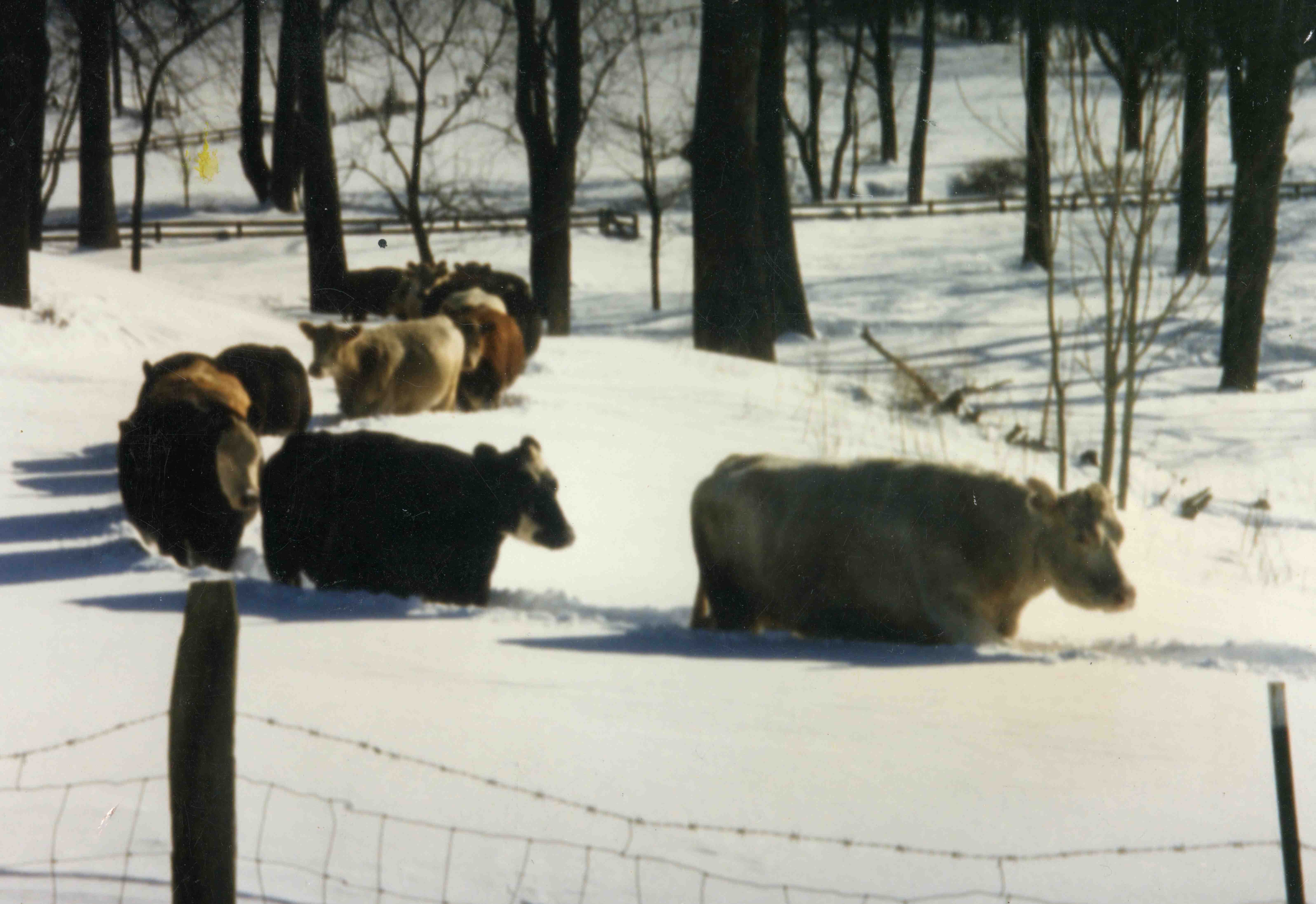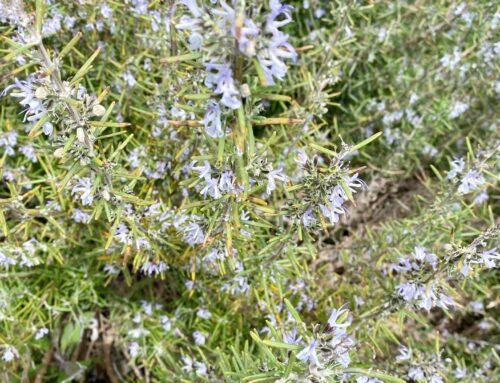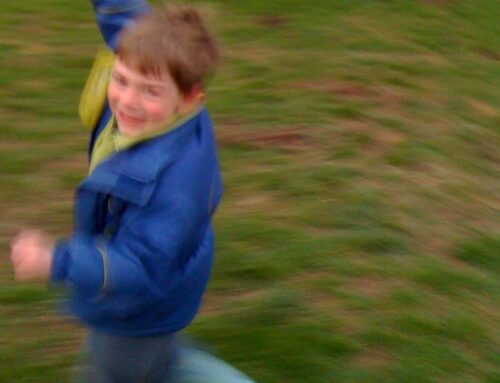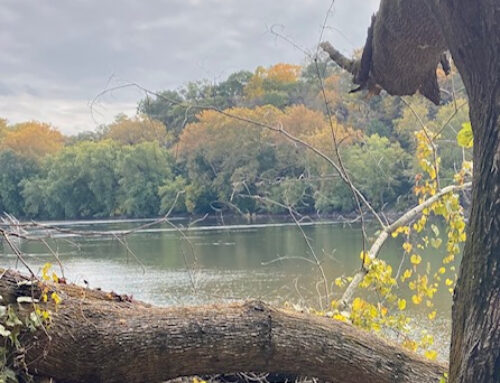Frankenstorm.
Snowmaggedon.
80 mph Derechoes.
Throw in the Drought of 2012, and we’ve endured one heck of a spate of recent challenges on our little Mid-Atlantic farm. Organic, free-range farms are supposed to be idyllic places where sheep scamper through the pastures, pigs grunt contentedly in the mud, and chickens peck the ground for earthworms. So what does a farmer do when all “H-E-Double Hockey Sticks” breaks loose?
When disaster looms, my first responsibility is to ensure that my animals are safe. However, with many different types of animals on the farm, the notion of ‘safety’ can vary widely between species. For example, cattle are much less vulnerable during a blizzard than pigs or chickens. The leathery hide and thick body fat of a cow provides amazing insulation, so much so that a blanket of snow can accumulate on their backs without even melting. Conversely, long periods of heat and drought can be debilitating to cool weather-loving cattle, reducing their appetite for pasture, changing their digestive chemistry, and inhibiting weight gain.
Our free-range chickens and pigs are the most vulnerable to harsh conditions, and for these animals some form of pasture shelter is critical. This doesn’t mean that we whisk them into buildings at the first sign of inclement weather; on the contrary, the animals head for protection only until the storm passes. These simple buildings not only offer low-tech protection from brutal conditions, but also create a space where the animals can be fed in the event of a prolonged weather catastrophe (such as the 3 foot deep Snowmageddon that lasted for several weeks).
 Long before the widespread adoption of enclosed ‘factory farm’ buildings, pioneering farmers learned to balance the risks of free-ranging with the rewards. For instance, my ancestors had the good sense to build two large barns. These were used to store hay for winter feed, as well as for emergency refuge for animals (especially for the sheep, which can stoically withstand a hurricane, but are buried in a blizzard). However, as the picture to the left demonstrates, things rarely go according to plan: a Derecho recently slammed into our 200 year old barn, and collapsed a 30 foot foot section of solid brick wall. I imagine our sheep were happy to be out in the pasture, and not standing beneath the avalanche of bricks!
Long before the widespread adoption of enclosed ‘factory farm’ buildings, pioneering farmers learned to balance the risks of free-ranging with the rewards. For instance, my ancestors had the good sense to build two large barns. These were used to store hay for winter feed, as well as for emergency refuge for animals (especially for the sheep, which can stoically withstand a hurricane, but are buried in a blizzard). However, as the picture to the left demonstrates, things rarely go according to plan: a Derecho recently slammed into our 200 year old barn, and collapsed a 30 foot foot section of solid brick wall. I imagine our sheep were happy to be out in the pasture, and not standing beneath the avalanche of bricks!
Taking a broader view, most days on a free-range farm are picture perfect. Cows graze in the green meadows, and lambs drowse beneath the walnuts. But I’ve learned that I must expect occasional weather catastrophes along with all the beauty.
On Monday, when Hurricane Sandy lashed our pastures with unrelenting rain and 50 mph wind gusts, we lost ten of our free range chickens to hypothermia. Their feathers became soaked, their bodies chilled, and in a matter of moments they died on the same gentle pasture where they had lived their entire lives.
No amount of preparation can guarantee livestock won’t be lost when another calamity strikes. To put it in perspective, beyond the boundaries of my own small farm, countless wild animals perish during major weather events. It’s foolish to think that my domesticated animals are somehow hardier than their wild cousins. Most days, I feel fortunate that Mother Nature treats us as gently as she does. It’s a conflicted relationship, no doubt.
But it’s precisely this knowledge —that my chickens, pigs and cattle are living a life in close harmony with nature— that continually inspires me as a farmer. I’m grateful to live a life filled with natural balance: sunshine, rain and snow. Even on the worst days, it’s a job I wouldn’t trade for anything.












Leave a Reply